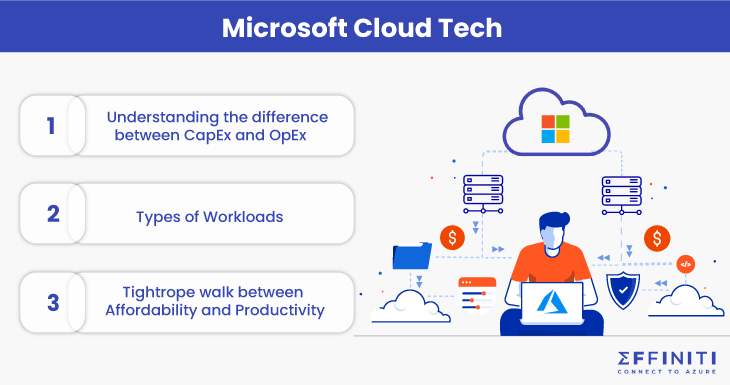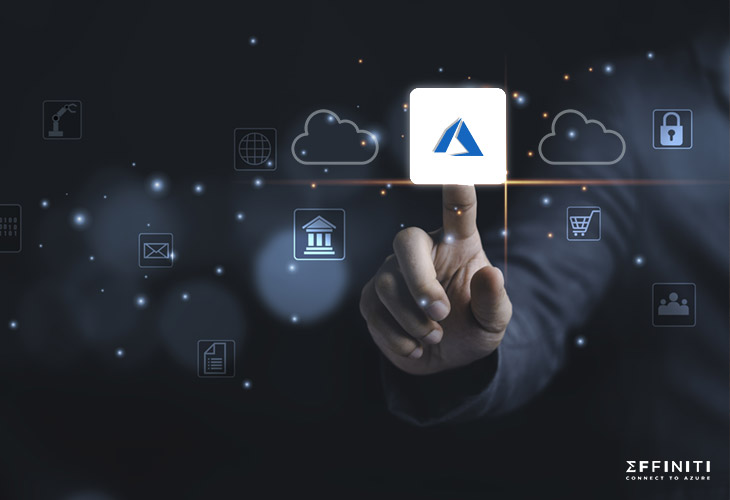With pandemic catalysis, the world expedited its integration with cloud solutions. Just as the other major cloud solutions, Azure has grown massively and has become one of the major revenue streams of Microsoft. Due to its massive popularity, it is easy to get enamored by the charm of Azure and cloud technology in general.
After all, Azure is generally perceived as a revolutionary technology that saves money without cutting corners. However, this is true only when one has a clear understanding of Azure’s monetary mechanics. It is at this juncture you have to ask yourself whether you aced the economic aspects of Azure. If you haven’t, fret not. You are not the only one who has been confused by Azure’s jargon.
Microsoft cloud tech is one of the fastest-growing cloud technologies in terms of innovation, among various other aspects. However, it’s oceanic depth is one of the major impediments that Azure poses to novice customers. And, here in this blog post, we shall demystify Azure’s economics and elaborate on how to navigate the cloud journey in a cost-effective yet productive way.

1) Understanding the difference between CapEx and OpEx
The pay-as-you-go model is one of the distinctive features of cloud tech. Azure sports the same feature. However, unlike AWS, which bills its customers on an hourly basis, Azure bills you on a minutely basis which is relatively cost-effective. This is the primary advantage of Azure over the on-premises servers.
Although on-premises data solutions are as firm as bedrock, their firmness drags them back in this modern day of computing. As a result, the organization is saddled with unwanted capital expenditure or CapEx even during their lean period.
These unwanted costs are trimmed by Azure which allows its customers to pay only for what they use. This operational expense or OpEx stunts a company’s CapEx and allows the user to become cost-effective by employing and paying for the resources only when they need them.
At this juncture, the customers need to understand that OpEx is a variable that changes as per the organization’s needs. This dynamic nature allows Azure to be a cost-effective solution when compared to traditional on-premises data servers.
However, the OpEx aspect is cost-effective only when the organization understands the nitty-gritty details of its cloud workload requirement. So, let’s understand the types of workloads and the resources they typically require.
Also Read: The Benefits that Clients Enjoy When They Lift and Shift on Azure
2) Types of Workloads
Companies are ditching traditional on-premises setups as their peak performance is maxed out at a certain level. Amping up their peak performance would burden the organization with an expense that may meet the requirement on myopic terms. However, the additional servers and software tools would gather dust during the lean period.
To avoid this, companies across the globe are harnessing the benefits that Azure offers. With the most extensive global presence in cloud space, Azure offers hyper-scaling capabilities which benefit its customers. Be it autoscaling or manual scaling; Azure has got it. However, the customers will bleed money if they don’t understand the requirements that their workloads demand.
- Idle Workloads: Having a surplus of resources is nothing but an ineffective strategy. However, Azure goes the extra mile by axing workloads that are not consuming the resources that the company paid for. Additionally, Azure uses its built-in capabilities to scale the solutions to the appropriate size. Wicking away such oversized solutions from Azure would save the monetary resources of the company.
- Dynamic Workloads: There are always workloads that demand elastic computational resources. This is where the Azure scores best over on-premises data servers. The elasticity is the core aspect that saves you on CapEx and, to some extent, OpEx too. Most of its clients have commended the scalability function of Azure as the cloud wastes no time with its auto-scalability function. The automatic scaling saves not only money but also time.
- Predictable Workloads: Every organization has routine and fixed workloads that need to be operationalized regularly. The distinctive aspect of this workload is that it is a fixed workload that rarely needs any additional computing power. Considering automation is a wise move as Azure would run the tasks in the background while the company does other tasks. Automation not only reduces the manpower requirement but also axes room for error.
- Obsolete Workloads: Over time, some aspects, if not all, of a workload become outdated. The onus is on the company to refine or remove such workloads as they are nothing more than deadweights. Not only do they occupy space in the company’s Azure space, but they stack up unwanted expenses. The workload refinements need to be done periodically. An auditing team will help the organization achieve this goal.
Also Read: Propel Your Innovation with Azure’s Multi-Cloud and Multi-Edge Hybrid Capabilities
3) Tightrope walk between Affordability and Productivity
The common misconception about affordability is that it compromises quality and productivity. However, Azure has not grown in size just because it is a product of Microsoft. The people helming Azure are delving deep into the industrial needs and have come out with various offerings that are relatively high on productivity and low on cost.
- Azure’s Hybridity: Azure’s hybrid approach is a notch above the others. Although others offer hybrid capabilities, Azure has left no stone unturned with this aspect. Azure is firing on all cylinders by offering multi-cloud hybrid support as no other cloud does. This allows the clients to get the best of both worlds (or clouds in this context).
- Additionally, Azure packs a licensing boon titled ‘Hybrid Benefit’. The feature allows the clients to trim the expenses by bringing their on-premises SQL and Windows licenses to Azure. This savings feature outclasses AWS, Azure’s competition, as the Amazon cloud is 5x more costly than Azure. Microsoft has extended this benefit to RedHat and SUSE Linux servers now.
- Reservations: Azure sweetens the deal by offering incentives to the clients with foresight. Although cloud tech is all about employing resources on short notice, Azure goes out of the way by offering discounts when clients give reserve resources well in advance. The feature allows you to have the same features but at a lesser cost. To sum it up, you get it all but for a lesser price.The feature allows you to pay monthly at no additional cost. The savings will be deposited in your Azure account, which can be redeemed in the future. These redeemable savings are in-store coupons whose benefits will be experienced in the long run.
- Spot Virtual Machines: Azure’s Spot VM does anything but put the client in a tight spot. It allows the clients to employ Azure’s resources for heavily discounted prices.The catch here is that the workload should not be time-sensitive. The elimination of time constraints is what discounts the pricing of Azure. From development to quality assurance, the clients can do various tasks for discounted prices.
- Dev/Test pricing: Development and testing work is made cost-effective under Azure’s Dev/Test pricing model. However, this feature is available only to active Visual Studio subscribers. The usage of resources is limited only to development and testing. By restricting the usage, Microsoft is able to give this feature at reduced pricing.
Also Read: An In-Depth Comparison of Azure vs. Google Cloud vs. AWS Services
In conclusion

Azure is a powerful solution that aims to keep productivity up and expenses down. Unfortunately, due to haste and time constraints, clients don’t take the time to appreciate and understand their requirements before embracing Azure. Patience pays in the long run, and one has to realize the importance of introspection.
However, time is a luxury that many can’t afford in the 21st century. This is where many third-party resources step in and do the job. Many Fortune 500 companies and enterprises of various sectors were wise to hire the resources of Effiniti.
We are one of the leading figures in Azure space as we dole out reliable solutions which are tried and tested for optimal results. Collaborate with us, understand what Azure integration means for you and experience the best results cost-effectively.
More Articles:

